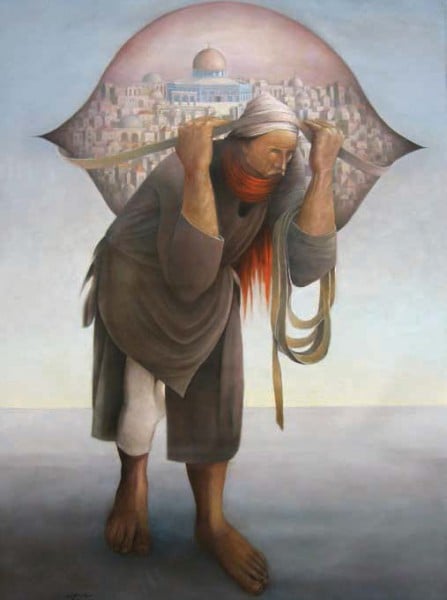Auctions
Most Famous Middle Eastern Painting to be Sold at Christie’s

Photo: Courtesy Alhoush

Lorena Muñoz-Alonso

Jamal Al Mahamel II by Suleiman Mansour will hit the auction block at Christie’s Dubai on March 18. The work is one of the most famous Palestinian paintings, if not one of the most famous from the Middle East at large. It carries a presale estimate of $200,000–300,000. A portion of the proceeds from its sale will be given to initiatives that support artists from the region.
The piece, a larger version made by Mansour in 2005 of the original he created in 1973, features an elderly Palestinian man carrying an eye-shaped sphere that contains a view of Jerusalem. The work, also known as Camel of Burdens, has become such an iconic image that countless reproductions can be found in households across Palestine.
The painting has a remarkable story. The 1973 original was gifted to Muammar Gaddafi by the Libyan ambassador in London, and is thought to have been destroyed during American air strikes against Libya in 1986.
When Ehab Shanti, then communications director at the United Nations Development Program in Jerusalem, met Mansour in 2005, he suggested the artist revisit the subject of Jamal Al Mahamel, a possibility Mansour had already considered following the presumed destruction of the original work.
The newer version is almost identical to the 1973 original, though it features such small updates as changes to the cityscape of Jerusalem, which now includes more Christian imagery.
Jamal Al Mahamel II was displayed last year during the Dubai Art Week, as part of the festival “This is Palestine” (see Two Hundred Palestinian Artists Exhibiting Works During Dubai Art Week).